When selecting an uninterruptible power supply (UPS), the choice of battery technology can significantly impact performance, reliability, and total cost of ownership (TCO). Two common options are the lithium-ion UPS battery and the VRLA UPS battery.
This article compares both technologies in terms of purchase price, lifespan, maintenance needs, and overall value.
VRLA UPS Battery: Low Initial Cost, Higher Long-Term Expense
VRLA (Valve-Regulated Lead-Acid) batteries are a traditional solution for UPS systems. They are relatively inexpensive to buy and widely available, making them attractive for budget-focused installations. Their mature technology ensures reliable performance in standard conditions.
However, VRLA batteries have some hidden long-term costs:
● Shorter lifespan: VRLA batteries typically last 3–5 years under regular UPS use. Frequent replacements increase total expenses.
● Lower energy efficiency: These batteries lose more energy during charge and discharge cycles, leading to higher electricity costs.
● Maintenance requirements: VRLA batteries need regular inspections, cooling, and sometimes electrolyte replacement, which adds to labor and operational costs.
When these factors are combined, the TCO for VRLA batteries can exceed the initial savings, especially in high-demand or critical applications.
Lithium-ion UPS Battery: Higher Upfront Cost, Lower TCO
Lithium-ion batteries are newer on the UPS market and come with a higher initial cost, typically several times that of VRLA. This higher price reflects advanced materials, more complex manufacturing, and integrated technology.
Despite the higher upfront investment, lithium-ion batteries often deliver lower total cost of ownership:
● Longer lifespan: Lithium-ion batteries can last 8–15 years, reducing replacement frequency and associated downtime.
● Higher energy efficiency: They lose less energy during operation, lowering electricity costs over time.
● Lower maintenance: Integrated Battery Management Systems (BMS) monitor and protect the battery, reducing manual maintenance and minimizing operational risk.
● Space and weight advantages: Lithium-ion batteries are lighter and more compact, sometimes reducing installation costs.
These factors mean that over the lifespan of a UPS system, lithium-ion batteries can be more cost-effective than VRLA, despite the higher initial purchase price.
TCO Comparison: Lithium-ion vs VRLA UPS Batteries
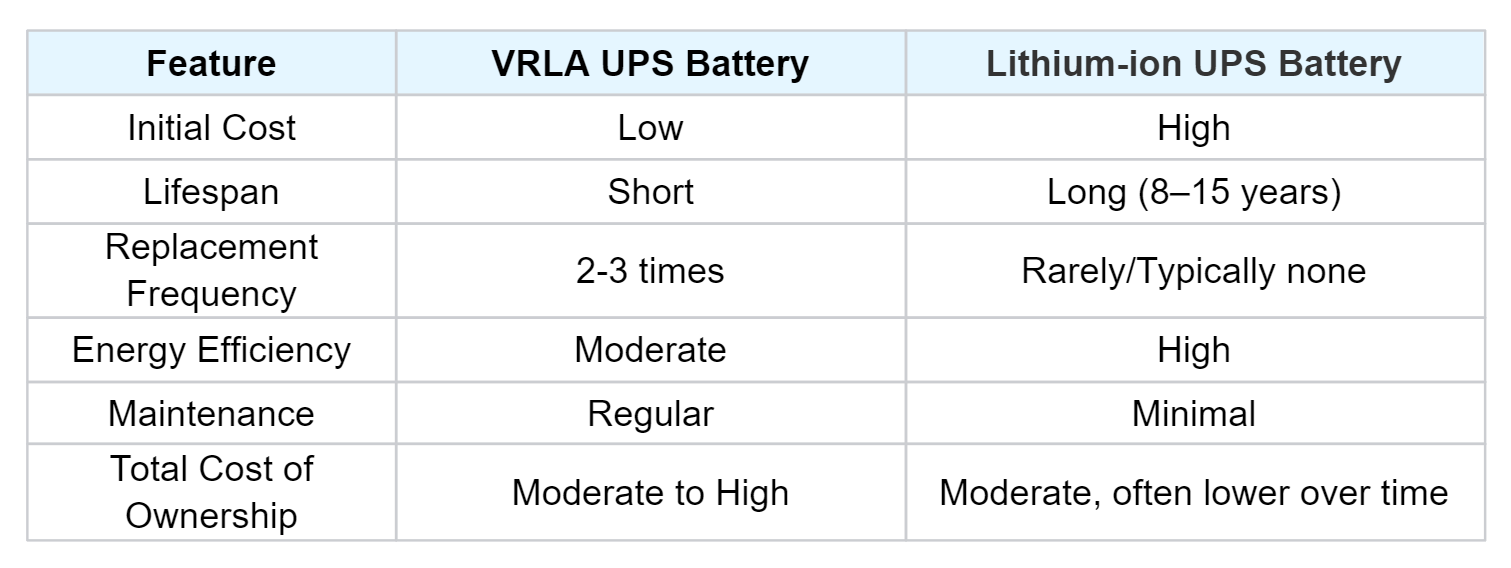
TCO Comparison Table
Note: Replacement Frequency is based on the typical lifespan of a single UPS (approximately 10–15 years).
1. Replacement frequency
Typically, a UPS lasts 8–15 years before being replaced, depending on usage and maintenance. VRLA batteries often need to be replaced two to three times during the lifespan of a single UPS.
In contrast, lithium-ion batteries have a lifespan of 10–15 years, often lasting the entire life of the UPS without replacement. This reduces operating costs and improves overall system availability.
2. Energy cost
Lithium-ion batteries are more energy-efficient than VRLA batteries, converting a higher proportion of stored energy into usable power. This efficiency reduces electricity consumption and lowers energy expenses over the lifetime of the UPS.
3. Maintenance and Labor
VRLA batteries require regular inspections, cooling, and occasional servicing, which increases labor and maintenance costs. Lithium-ion batteries, with integrated battery management systems (BMS), minimize these needs, saving time and reducing the risk of human error.
4. Operational Reliability
Lithium-ion batteries offer higher reliability with fewer failures and less downtime. This is particularly important in critical facilities such as data centers, hospitals, or financial institutions, where unexpected UPS interruptions can lead to costly disruptions.
Conclusion
While VRLA batteries are appealing for low-budget installations, lithium-ion batteries often deliver better long-term value when considering total cost of ownership. Businesses focused on reliability, efficiency, and minimal maintenance will likely benefit more from lithium-ion UPS battery solutions.
Ready to upgrade your UPS system? Explore our range of high-performance lithium-ion UPS batteries today and see how they can enhance your data center reliability and efficiency.












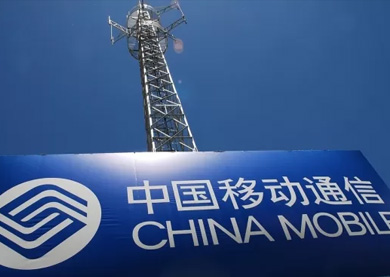





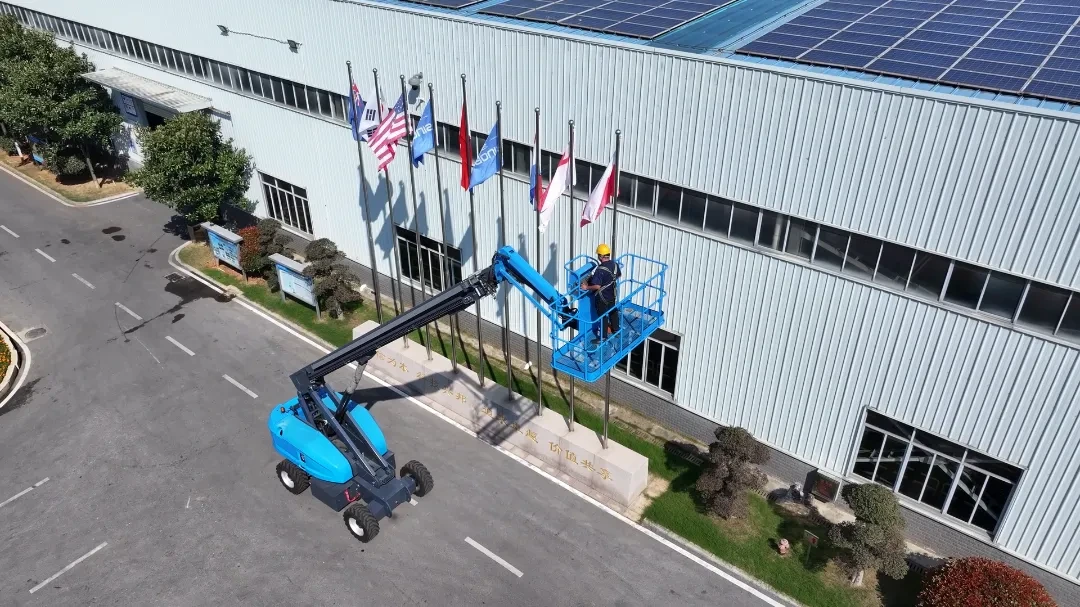




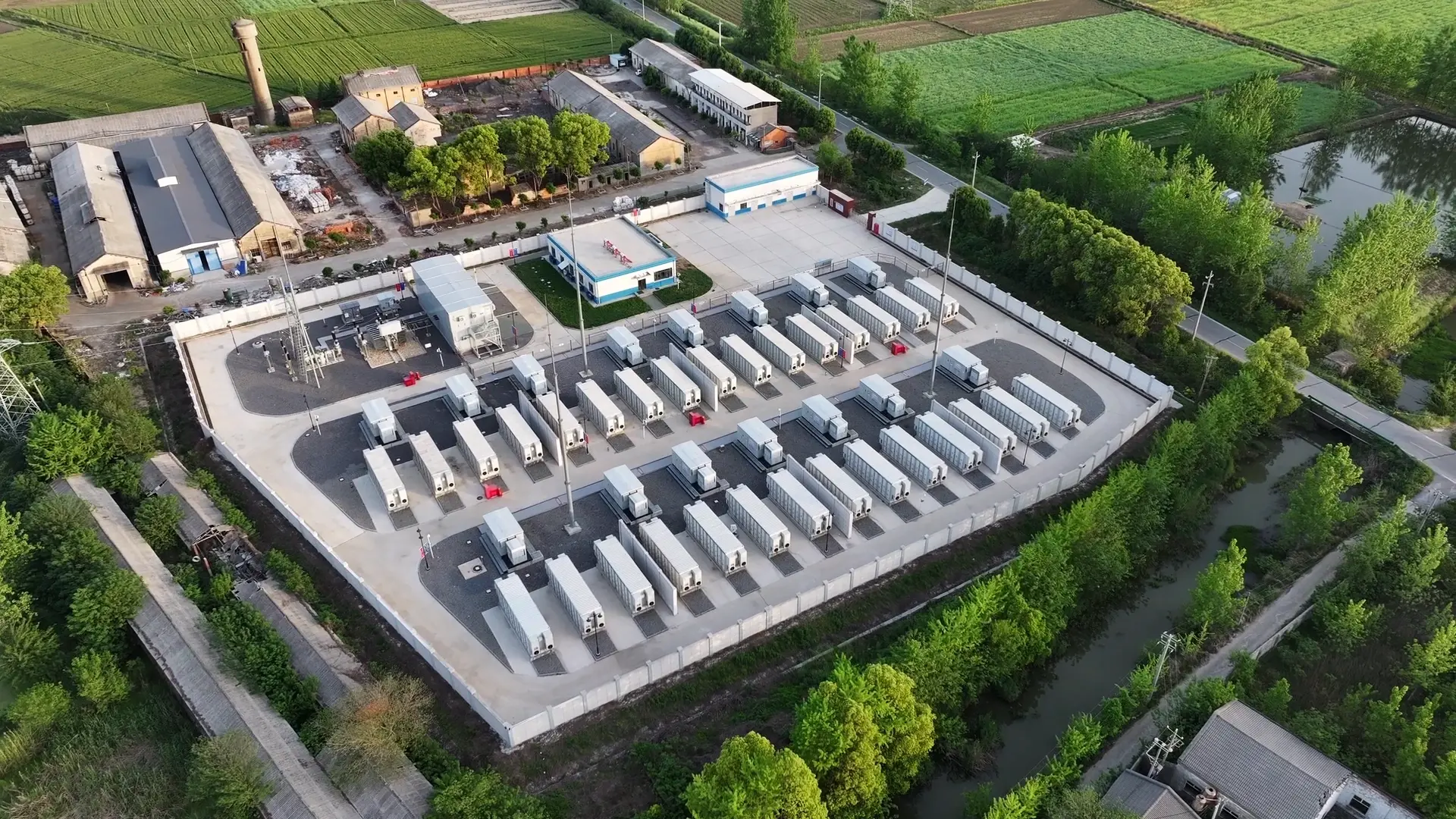
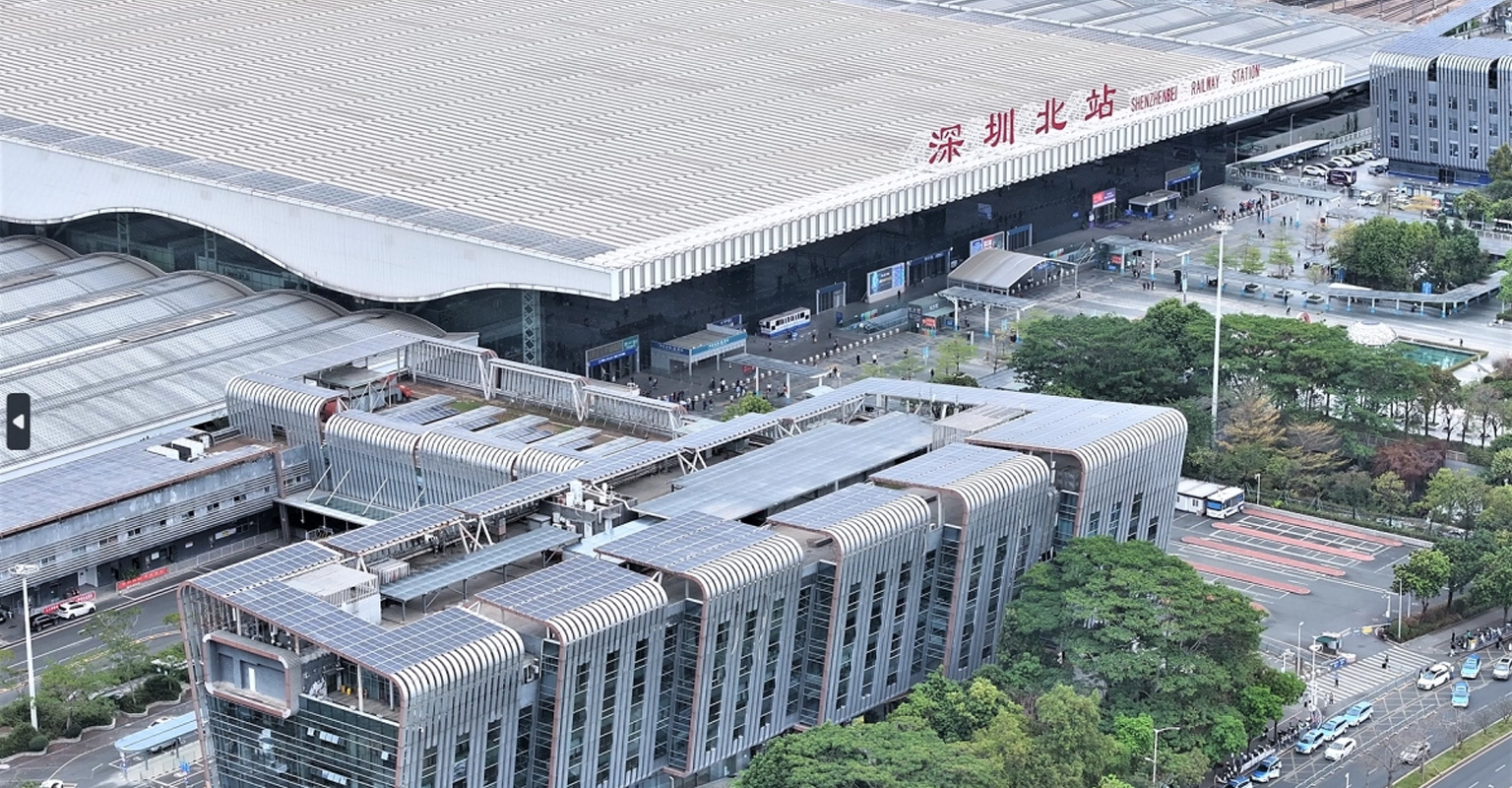



 2025-08-15
2025-08-15 Name
Name Tel
Tel Email
Email Country
Country Company
Company Information
Information